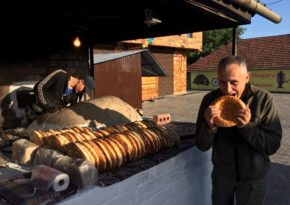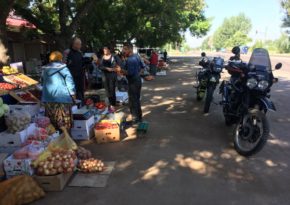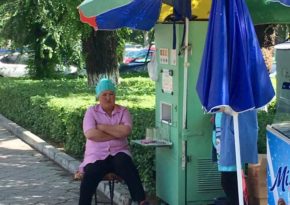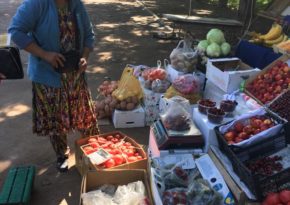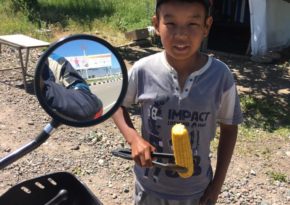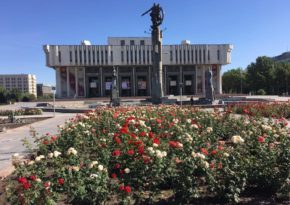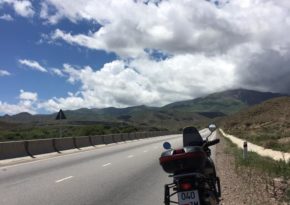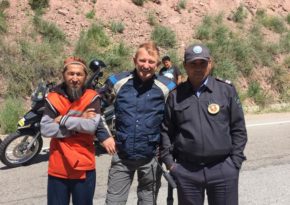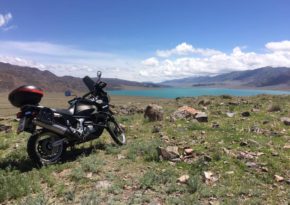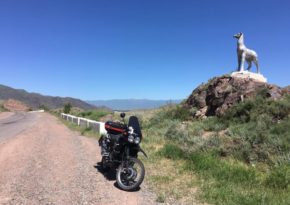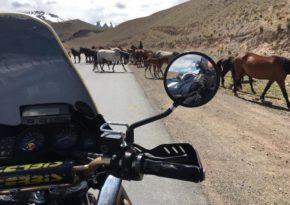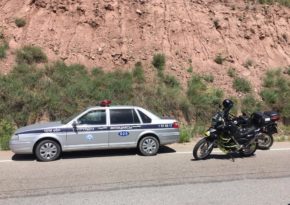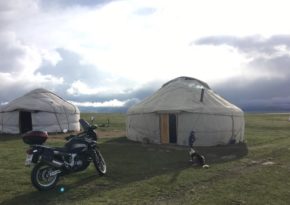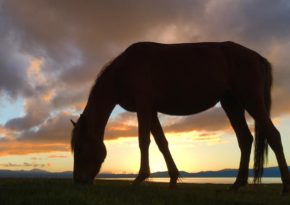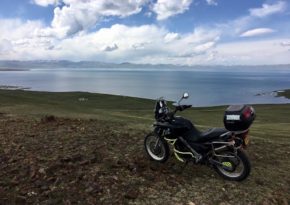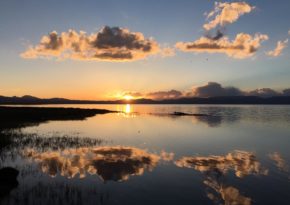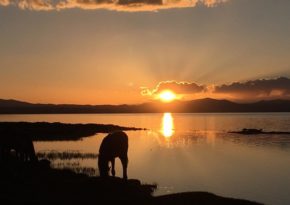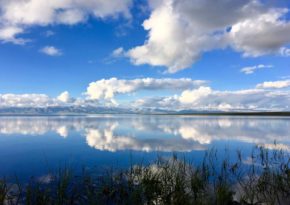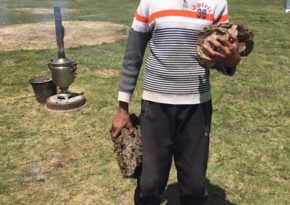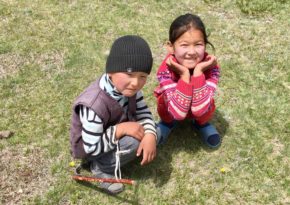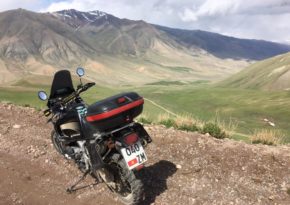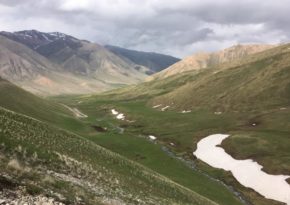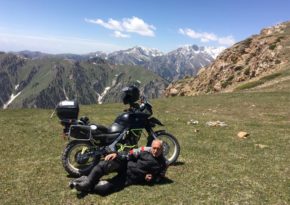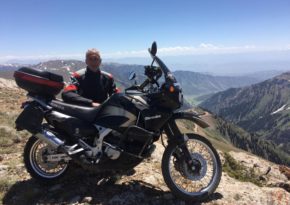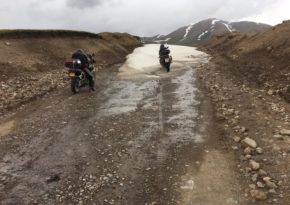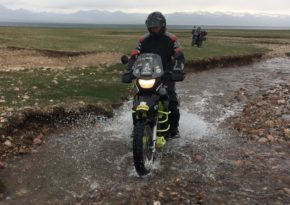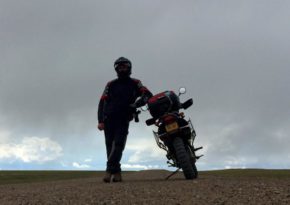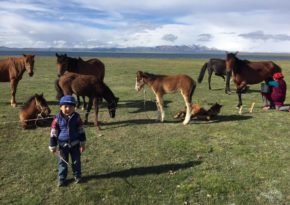Kyrgyzstan 2017
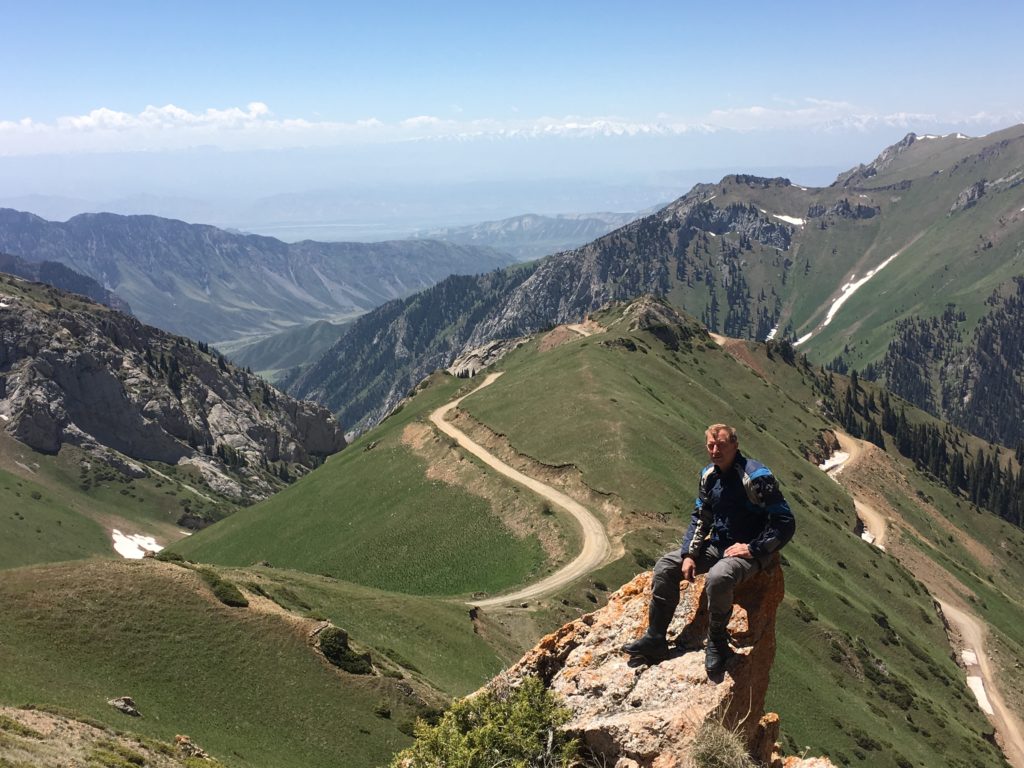
The Aeroflot plane landed at the airport of Bishkek, the capital of Kyrgyzstan, at 5 a.m. And two hours later we were already squeezing through traffic jams along the narrow streets of the city by two motorbikes, which we rented from a local motorbiker Vadim.
Bishkek wakes up early. At 6 a.m. life is in full swing. At the local market sellers are laying out greens, fruits, vegetables, trays with strawberries and cherries onto the stalls. Right by the road one fellow is taking out hot tortillas from the tandoor, which smells veryyummy, and is selling them for 25 som apiece. (100 soms equals 80 roubles). Numerous cafés and restaurants are empty today, since the Muslim fast (Ramadan) has recently begun.
Bishkek is the capital and the largest city of Kyrgyzstan, populated by about a million people. It can be described as a city of contrasts. There are a lot of decent hotels, modern buildings, shops and restaurants in the central part but all the districts that are a little further from the centre resemble some of the Russian average country towns in late 90s.
Small shops, outdoor markets, tents, in which you can buy everything, squalid tire shops and hideous buildings that serve for an unknown purpose. The Russian language is spoken by almost everyone here and most of the names of streets, shops and advertising billboards are in Russian as well.
The roads in Kyrgyzstan are good enough,so you can go at a high speed. But not for long. Traffic policemen with radars were waiting for us almost everywhere, where there is a speed limit signmark. Our first acquaintance took place soon after we left Bishkek. I decided to check what the aged Honda Africa Twin 2003 that I got was capable of. And the local guys with striped sticks and radars did enjoy my performance. In general, traffic policemen in Kyrgyzstan are quite sensible, so to say, quite friendly and not greedyunlike their colleagues in neighbouring Kazakhstan! You can always negotiate with the former on a half of the official fine, which isn't that expensive though. Therefore, increasing the speed for 30 km/h over the limit cost us 500 soms together (which corresponds to Russian 400 roubles).
Kyrgyzstan is not an expensive country. At first glance, the prices may seem a little surprising (in a good connotation). So, basic foods are 30-40% cheaper here than in Moscow and its surroundings. Gasoline costs from 32 to 35 roubles per litre. Half a litre of vodka costs 200 roubles. And an average salary in Kyrgyzstan varies from $200 to $300.
From Bishkek we went along the path as straight as an arrow, which led us southeast in the direction of Lake Issyk-Kul. This time our route passed by this pearl of Central Asia. The ultimate goal of today and a few following days is the high-altitude Lake Son-Kul, which is located in the centre of Kyrgyzstan at an altitude of 3000 m high above sea level. After overcoming 350 km (more than a hundred of which were along the ground roads) and enjoying the incredibly beautiful views, we went to an endless high-altitude plateau surrounded by snow-capped peaks, whichwere reflected in the lake as in a mirror together with clouds and the wonderfully clear blue sky. The landscape was just amazing! There are no signs of civilization here, no roads, no villages, no communication linking, no electricity... nothing at all! Winter in this area is very harsh and strong winds and frosts do not allow even shrubs to grow. But in June, when snow melts down, local herders bring their herds here. They set up yurts and live in them until autumn, until the passes become covered with snow again.
Son-Kul is a unique place. Here you live as if on another planet: out of time and out of space... The clear surface of the lake, the velvet mountains… And the total silence can be disturbed sometimes only by the trampling and neighing of horses that graze near the yurts.
Why have we climbed up to the very clouds?
Every May, almost at the same time, horses bring offspring and these little foals, which are not more than three weeks old, graze nearby, being fed by their mothers' milk.
At this time, milk is especially valuable, since it is rich in nutrients that are necessary for foals in the first weeks of their life. The herders milk horses, taking little milk from them, drink it themselves and give it to their children.

It is said that if you regularly consume this milk for at least two weeks, then all the diseases of the gastrointestinal tract are bound to disappear and, in general, there is a noticeable improvement in the condition of the entire body. That's why we came to this jailoo (in translation, it is a high-mountain pasture) by motorbikes. Well, to combine the useful with the pleasant!
Horse milk doesn't taste like cow's at all. Its scent is quite specific and not every person would be able to drink at least a glass. Especially a fresh one. We had been drinking it for a week: every two hours, after milking, we had a mug of horse's milk. Since I've tried a lot of exotic foods in my life, for example, fresh snake blood with bile and dried scorpion, I didn't have any problem with that milk either.
By the way, let me make an explanation. Kumis is a low-alcohol drink made from horse's milk, by fermenting it in a special way in a wooden barrel. It can be stored for quite a long time and the Kyrgyz drink it throughout the year.
Samal is the unrestrained, freshly cooked kumis.
This way, horse's milk is like grape juice, samal is like young wine and kumis can be compared to aged wine.

The weather in jailoos is unpredictable. Especially in early June, when the snow-capped peaks of the mountains are covered with clouds and a cold wind can bring rain at any moment. The landscape changes dramatically and because of the weather you wouldn't be able to leave the yurt for hours, but you can warm yourself at the stove and play backgammon or cards.
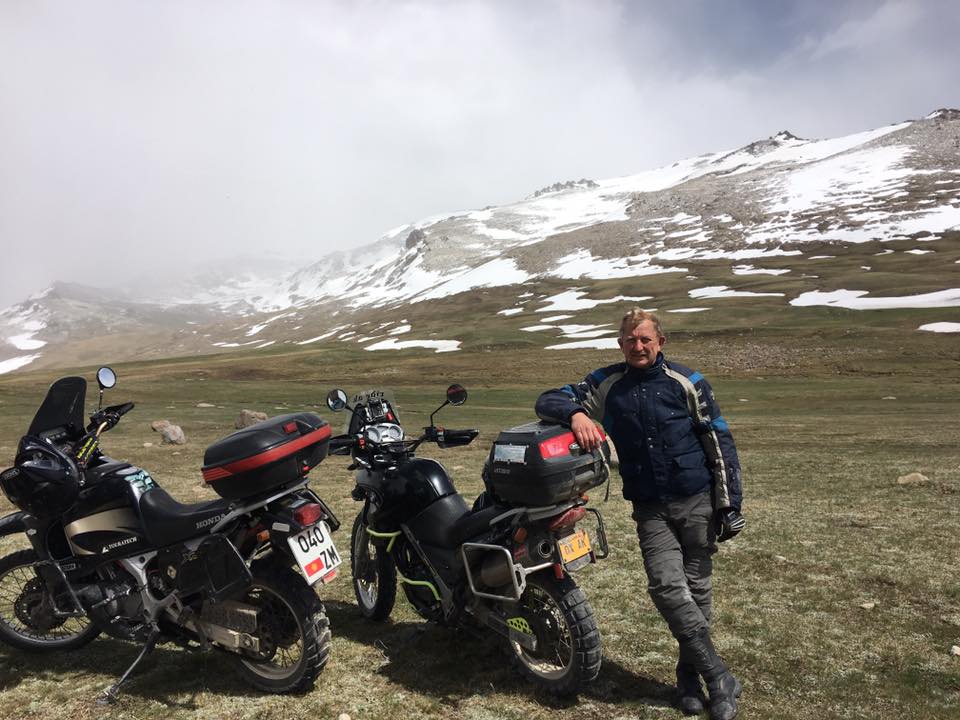
After sunset the temperature drops sharply. And if during the sunny day you could even sunbathe, then at night the thermometer shows the temperature below zero. This time we were lucky with the weather, as it almost didn't rain at all, which allowed us to climb the peaks and passes, where the snow lay in a 1 m high layer. Hardly had anyone got there before us.
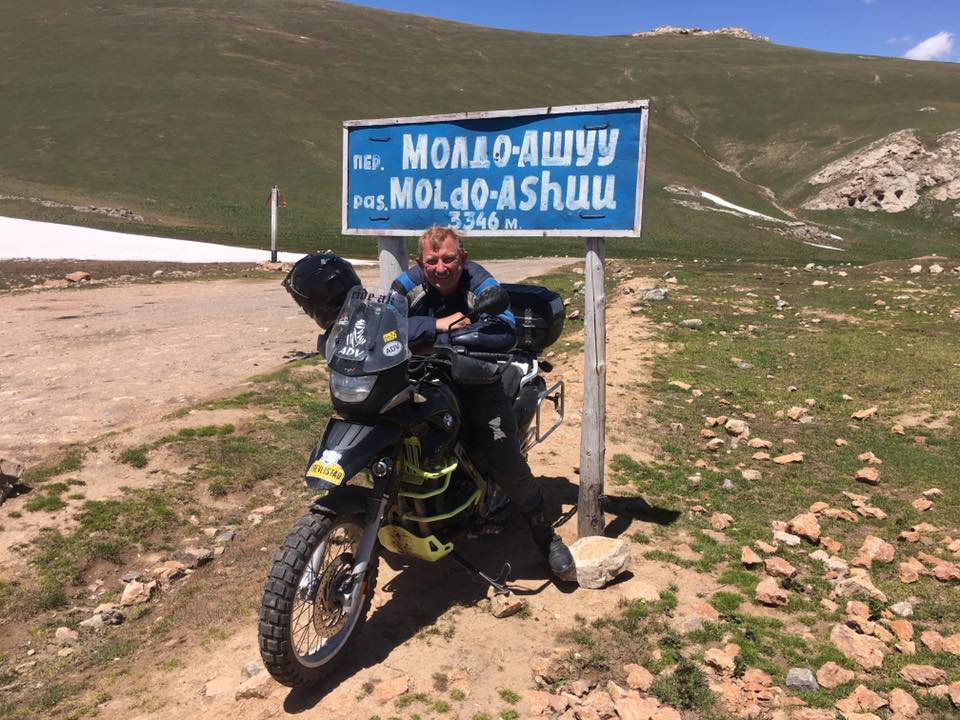
Well, no one visited these places, at least, this year for sure! You had better
come here by light enduro, although our old Honda and the 650 BMW motorbike climbed steep slopes and stormed over the rocky fords of mountain streams quite briskly.
I couldn't even imagine how gorgeous the views and beautiful the roads are here. Everything is just fantastic! The top of the Moldo-Ashuu pass offers such a fabulous landscape, that you can be sitting on a ledge of the rock, watching the vastness and thinking about the meaning of life. Or not thinking about anything at all.

If you circle around Lake Son-Kul, you will pass a little more than 100 km. But this journey is worth it!

A winding ground road led us along the shore, approaching the very edge of water and then taking us high into the mountains. This fantastic route was laid through rocky steep ascents, descents, wetlands, fords, mountain rivers, treacherous washouts and snow drifts. Vladimir Tchaikovsky, this is the place where GS CAMP should be held!!!

In summer, children of the Kyrgyz cattle-breeders live in the yurts in the jailoos together with their parents. From the age of seven or eight, they already help them with their chores and from the age of ten they become full-fledged assistants. We lived in one yurt with an 11-year-old boy, who was hired as a worker for the summer.
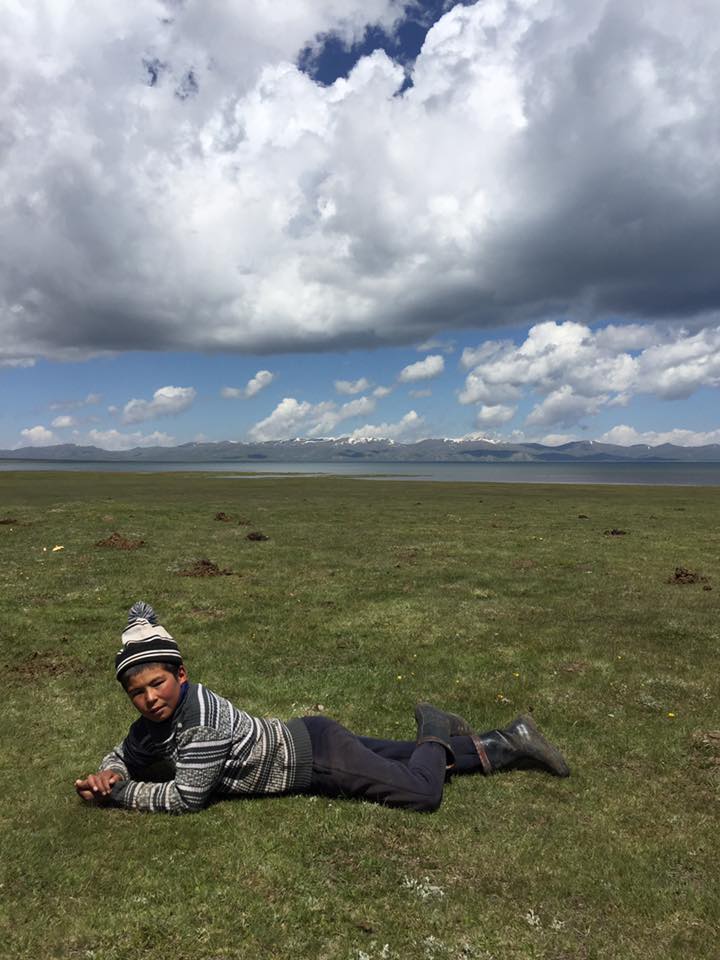
He worked on a par with adults: he heated the stoves in the yurts, herded the cattle, chopped firewood, collected dry dung fuel, dug a large pit for the toilet… All this he did quickly and deftly. And he was so well-skilled at managing the horses! Not like us with our motorbikes… :)
If you turn up in this wonderful country, Kyrgyzstan, and accidentally lose your wallet with all the money and credit cards, do not despair!
All you need is just to get to Lake Son-Kul and find three totem pyramids stacked on a high mountain of stones. There is a brand-new $100 bill under one of them, in a plastic bottle of Fanta.
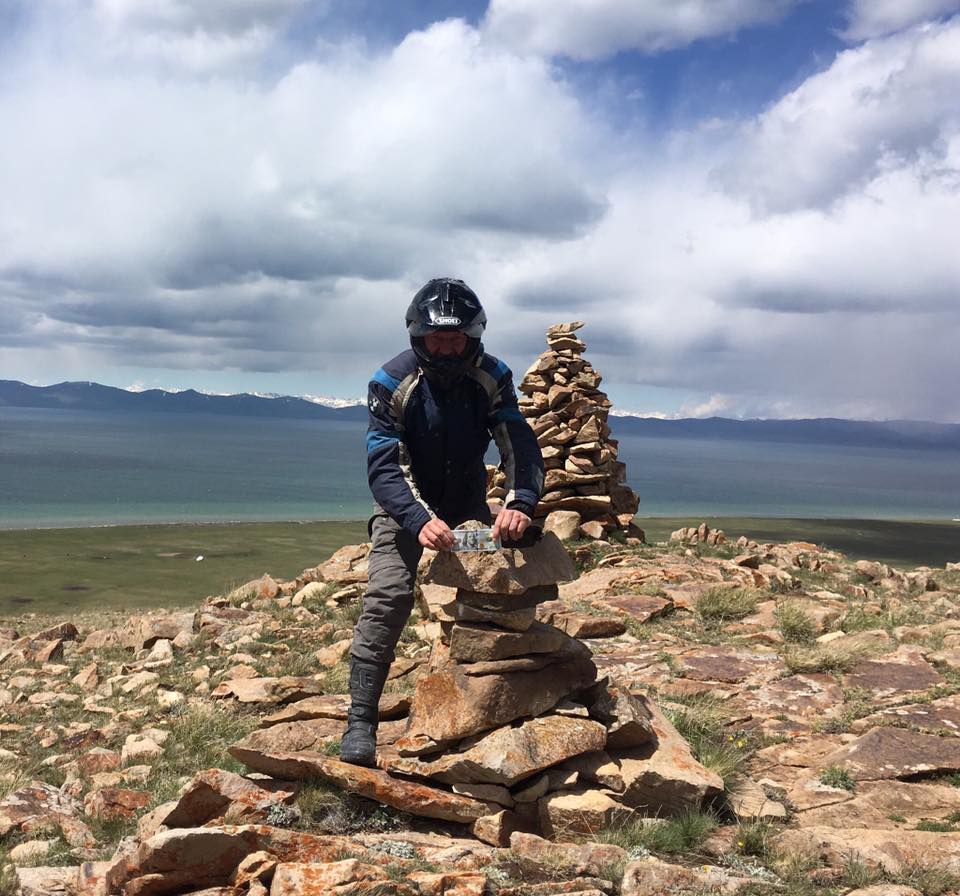
For this money you will be able to live in a lovely yurt on the shore of an incredibly beautiful lake, eat delicious food and drink horse's milk for three days!
Well, during this period of time you will definitely come up with some idea or choose to stay here for another week or two. Good luck!!!

P.S. And in case someone gets ahead of you with finding the money, don't worry but just sit down on a rock and look into the distance, where a ridge of velvet mountain peaks stretches beyond the blue strip of the lake; look at clouds, which are slowly floating across the sky, and at a herd of horses grazing below… And then you will understand that all this is exactly what is worth dreaming, living, traveling and exploring this beautiful and wonderful world!
 Cap-travel.ru
Cap-travel.ru
